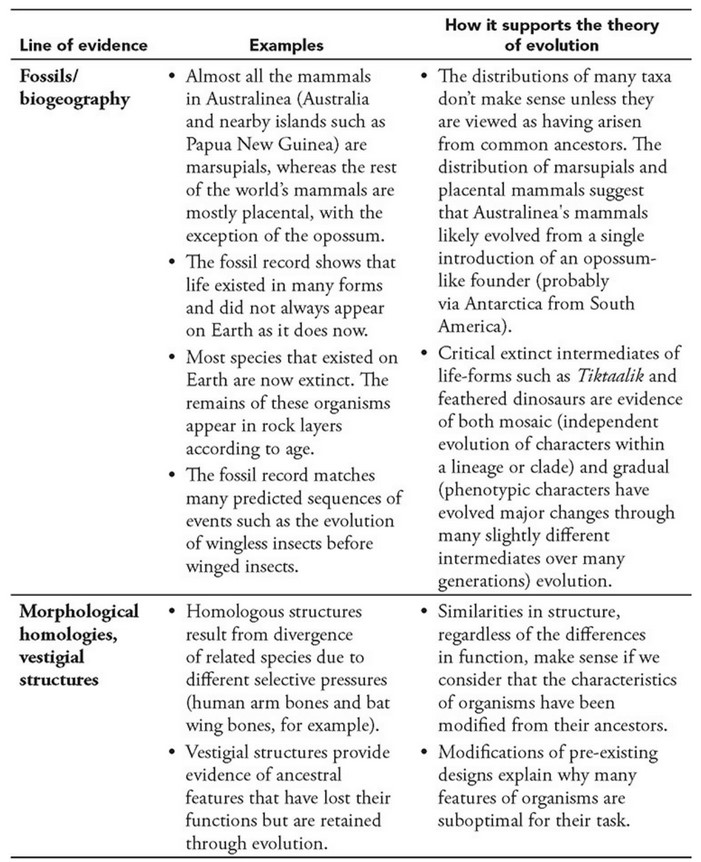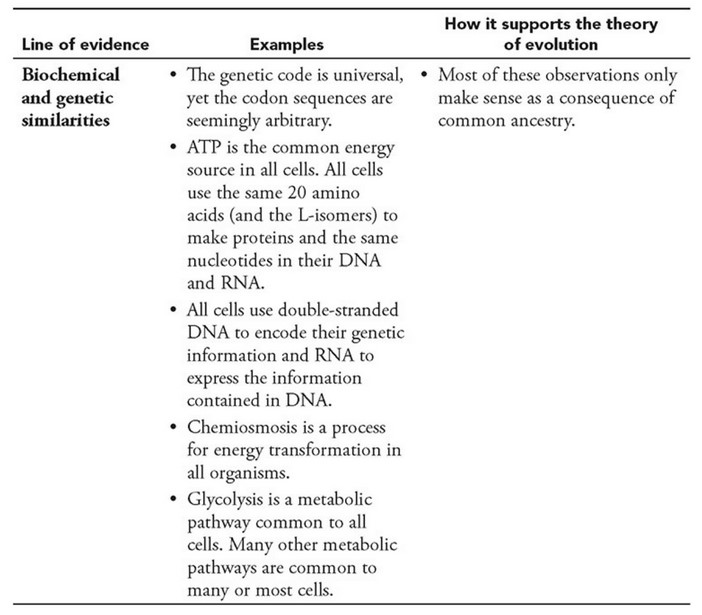Question
Many lines of evidence support biological evolution. State one example of supporting evidence from each of the following categories and explain how it supports the theory of evolution.
• Fossils/biogeography
• Morphological homologies, vestigial structures
• Biochemical and genetic similarities
▶️Answer/Explanation
Ans:
Evolution by natural selection and genetic drift is a fact. The word
theory in science refers to a theoretical framework or a model in which to
understand natural phenomenon. It is not just an idea. See the box before
answer


Question

- Explain how the percent difference in the nucleotide sequence of the gene could be different from the percent difference in amino acid
sequence of the protein. - State whether the protein sequence could have a greater percent difference than the gene sequence.
- Justify your response.
▶️Answer/Explanation
Ans:
The gene sequence can have more differences than the polypeptide
sequence but not the reverse. A change in the DNA sequence will change
the nucleotide sequence, but it may not change the amino acid
sequence. However, all amino acid sequence changes are caused by
nucleotide sequence changes.
Question
Fossils of lobe-finned fishes, which are ancestors of amphibians, are found in rocks that are at least 380 million years old. Fossils of the oldest amphibian-like vertebrate animals with true legs and lungs are found in rocks that are approximately 363 million years old. Three samples of rocks are available that might contain fossils of a transitional species between lobe-finned fishes and amphibians: one rock sample that is 350 million years old, one that is 370 million years old, and one that is 390 million years old.
(a) Select the most appropriate sample of rocks in which to search for a transitional species between lobe-finned fishes and amphibians. Justify your selection.
(b) Describe TWO pieces of evidence provided by fossils of a transitional species that would support a hypothesis that amphibians evolved from lobe-finned fishes.
▶️Answer/Explanation
(a) • Selection: Rocks from 370 MYA sample.
• Justification: Transitional fossils are found between 380 MYA (when lobe-finned fishes lived) and 363 MYA (when amphibians appeared) OR between different strata/layers in the correct order.
(b)
• Bones OR specific skeletal structures legs /limbs/digits vertebrae flat skulls (interlocking) ribs flexible neck
• Scales
• Teeth
• Other homologous structures
• Has traits of both the lobe-finned fish and the amphibian
• Finding the transitional fossils in the same area/same environment as either the lobe-finned fish or the amphibian
• Molecular (DNA) evidence
